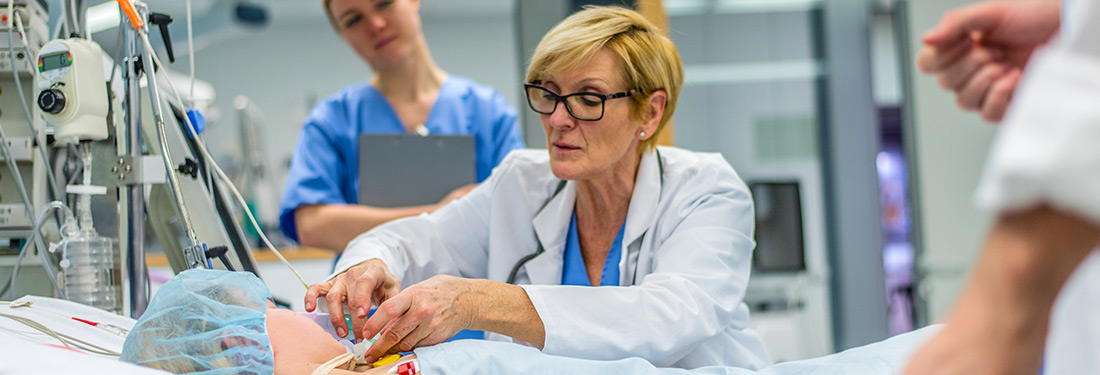Sustaining Improvements to Patient Safety
A couple years ago, we reported on the innovative lean work of Virginia Mason’s VTE Therapeutics Committee and the accomplishments of all the leaders, providers and staff in the critical care unit. Through their work, they achieved 100 percent compliance, for 25 consecutive months, with the Centers for Medicare & Medicaid Services (CMS) measures for venousthromboembolism prophylaxis for their intensive care patients.
In July 2016, a Virginia Mason quality assurance analyst sent the committee the VTE defect report they’d been waiting for. The hard work of the team’s leaders, providers and staff — including Barry Aaronson, Niloofar Alikashani, Rowena Browman, Lisa Chamberlain and many other colleagues on their multidisciplinary teams — had resulted in 36 consecutive months of 100 percent compliance with the CMS measures for VTE prophylaxis for intensive care patients. “We continue to be defect-free!” Alikashani announced.

Creating ambassadors of safety
The report also reflected their work in spreading the success to the rest of the organization. By July they had achieved 22 consecutive months of 100 percent compliance with the CMS measures for hospital-acquired potentially preventable VTE (VTE-6) and 7 consecutive months of 100 percent compliance with the CMS measures for VTE prophylaxis (VTE-1).
Advice for health care leaders
At a poster session at the Health Forum and American Hospital Association Leadership Summit in San Diego, July 17-19, 2016, health care leaders learned of the team’s accomplishments and asked what they could do to make this a reality in their own organizations. Alikashani offers this advice to leaders:
- Create standard work, and be sure upper level management continually enforces it.
- Use an effective tool like the VTE Clinical Andon Board, which lets all team members — as well as patients and family members — know the status of VTE compliance in real time.
- Use CPOE to make VTE prophylaxis mandatory. For example, at Virginia Mason the providers cannot sign admit and post-op orders until they have either ordered pharmacologic/mechanical VTE prophylaxis or have documented the reason why nothing was ordered.
- Remember that this work is always a work in progress. You need to keep evaluating the work and making changes, when necessary, to make the process better.
The VTE Therapeutics Committee members continue to build on their progress to protect patients every day. They know that engaging frontline staff, providers and leadership is crucial to keeping the work on track. By working with a lean management method that empowers every employee to keep patients safe, the team is not only achieving zero defects but also inspiring health care organizations everywhere to do the same.





